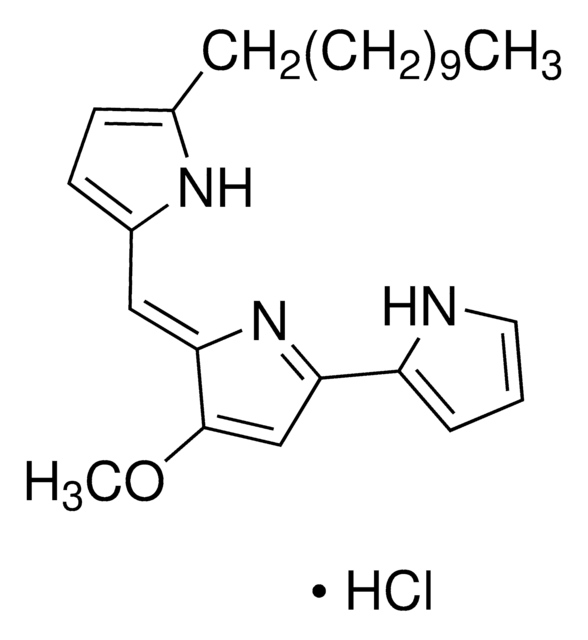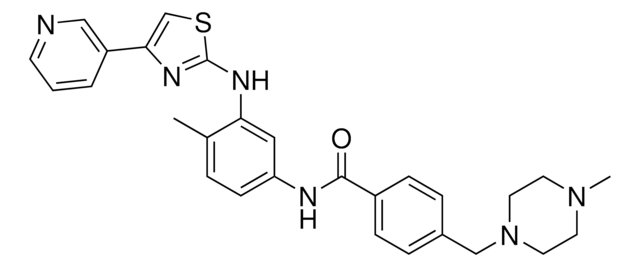SML1594
Cilengitide trifluoroacetic acid salt
≥95% (HPLC)
Synonim(y):
2,2,2-trifluoroacetate, Cyclo(L-arginylglycyl-L-a-aspartyl-D-phenylalanyl-N-methyl-L-valyl), 2,2,2-trifluoroacetate, EMD 121974, NSC 707544, c(RGDF(NMe)V)
Wybierz wielkość
808,00 zł
Wybierz wielkość
About This Item
808,00 zł
Polecane produkty
Poziom jakości
Próba
≥95% (HPLC)
Formularz
powder
kolor
white to beige
rozpuszczalność
H2O: 20 mg/mL, clear
temp. przechowywania
−20°C
ciąg SMILES
N1([C@H](C(=O)N[C@H](C(=O)NCC(=O)N[C@H](C(=O)N[C@@H](C1=O)Cc2ccccc2)CC(=O)O)CCCN\C(=N\[H])\N)C(C)C)C
InChI
1S/C27H40N8O7/c1-15(2)22-25(41)33-17(10-7-11-30-27(28)29)23(39)31-14-20(36)32-18(13-21(37)38)24(40)34-19(26(42)35(22)3)12-16-8-5-4-6-9-16/h4-6,8-9,15,17-19,22H,7,10-14H2,1-3H3,(H,31,39)(H,32,36)(H,33,41)(H,34,40)(H,37,38)(H4,28,29,30)/t17-,18-,19+,22-/m0/s1
Klucz InChI
AMLYAMJWYAIXIA-VWNVYAMZSA-N
Zastosowanie
Działania biochem./fizjol.
Kod klasy składowania
11 - Combustible Solids
Klasa zagrożenia wodnego (WGK)
WGK 3
Wybierz jedną z najnowszych wersji:
Certyfikaty analizy (CoA)
Nie widzisz odpowiedniej wersji?
Jeśli potrzebujesz konkretnej wersji, możesz wyszukać konkretny certyfikat według numeru partii lub serii.
Masz już ten produkt?
Dokumenty związane z niedawno zakupionymi produktami zostały zamieszczone w Bibliotece dokumentów.
Active Filters
Nasz zespół naukowców ma doświadczenie we wszystkich obszarach badań, w tym w naukach przyrodniczych, materiałoznawstwie, syntezie chemicznej, chromatografii, analityce i wielu innych dziedzinach.
Skontaktuj się z zespołem ds. pomocy technicznej








